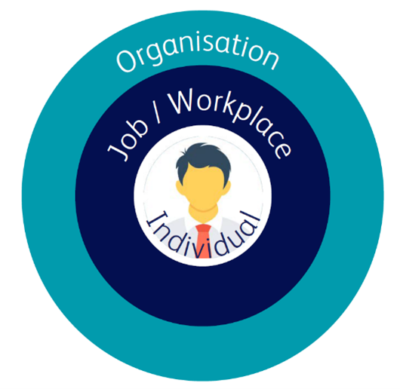Human Factors is one of those terms that everybody has heard of, but the full scope of what Human Factors covers isn’t always obvious. Human Factors (the American term), ergonomics (the UK term), or Human and Organisational Factors (ERA term), is about designing work in a way that matches the abilities, needs and limitations of the people doing the work. It is a very broad discipline, rooted in an understanding of the psychology and physiology of humans, but applying that knowledge to the design of equipment, tools, information, processes, and procedures.

Copyright RSSB 2022
The ‘onion’ diagram illustrates the wide range of the Human Factors discipline and the different things that can influence how well people work. Individual factors, like the different sizes and shapes that people come in and how people respond under stress or fatigue, are at the centre of Human Factors. But those people are asked to do a task at work, and how well that task is designed influences how well they can do it. Things like time pressure, distractions, or even the lighting and temperature of the environment all make a difference to how well and consistently the job can be done. The team that individuals work within, how well they communicate and the attitude they take to the job also influence the work. The organisation has a strong influence on all of this through the resources provided for the development of people and teams and the design of the tasks, and through the safety culture that is developed. And finally, society itself influences the work as, for example, the economic situation determines how much money there is available for investment or how many skilled workers are available to be recruited, new technologies are invented which change how work is achieved, and public attitudes change and make new demands on the organisation. Human Factors tries to consider all these influences and how they can be managed so that people are enabled to do their work to the best of their ability.
The application of Human Factors is most effective in the design of the railway, so any new fleet, control centres, and depots should have Human Factors analysis throughout the design to try to address any issues early on and make the new equipment as usable as possible.
